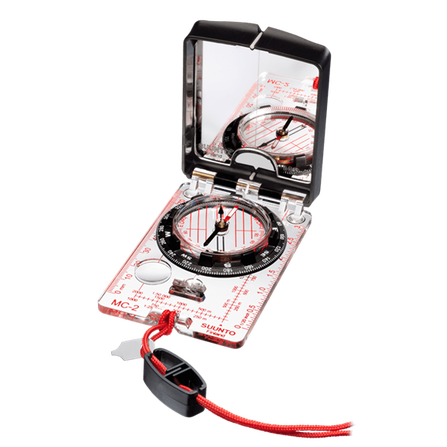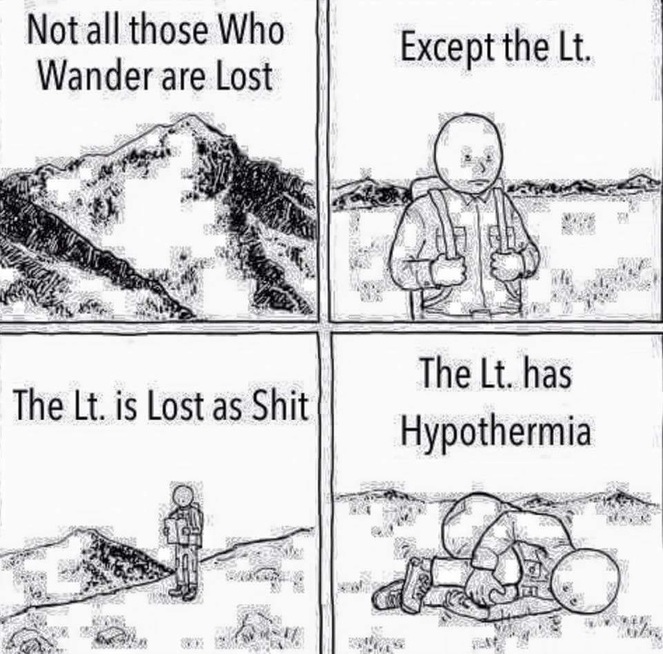|
I began my Patrol Pathfinder Course in September of 2002, having just returned from a six month deployment to Afghanistan. Three months later and 20 pounds lighter (incidentally 20 pounds more than I lost in Afghanistan), I’d passed. Still, while I may have received my torch, it wasn’t exactly covered in glory. |
On one particular patrol, we’d just finished up a dusk assault and were back in the Objective Rendezvous (ORV) waiting to exfiltrate the area. I was the navigator and I while I was plotting my exit route, one of the instructors leaned over and said we had to get out of the bush ASAP. It must have really been urgent, because the instructor also said I could use light to navigate.
That was a pretty big deal because we normally had to bash around in the bush in the dark, so before the instructor could change his mind, I fired up my headlamp with its red tactical filter, took my bearing by putting ‘red-in-the-bed’, and stepped off. Behind me, eleven other tired men hoisted their hundred-pound rucksacks and trudged along.
Which introduces the CAF leadership principle for this week,
Maintain Situational Awareness; Seek Information; Keep Current
Try as I might, I actually couldn’t find a good equivalent to this principle in the previous versions. Although one could argue that this principle is implied within ‘Keep Your Subordinates Informed,’ I’m not sure how somebody can do that without being informed themselves. Needless to say, I think there’s merit in a principle that exhorts a person to keep current.
So what exactly is entailed by maintaining situational awareness?
For starters, situational awareness refers to being aware of what’s going on around you. Especially in dynamic and complex environments, situational awareness is crucial as a mechanism to perform effectively. In effect, a person will find it difficult to make appropriate decisions if they don’t understand what’s going on around them. Of course, your environment is constantly changing, so to maintain awareness, it’s necessary to seek feedback – or information – in order to keep one’s perspective current.
Pretty straightforward, right?
Now for the tricky part, which is how to apply this principle to the business of writing. Luckily, the military has a four step process for maintaining situational awareness that can easily be adapted.
Define The Environment
The aim of this principle is ultimately to understand one’s environment – not what’s going on in the environment, only what the environment actually is. To do that, one must first define what specific environment is being understood. What does it include?
In our running example, readers are within the environment, but so are other writers. More broadly, the publishing industry is part of the environment as well, as are developments in online marketing or other services.
All of these things could impact decisions a writer must make, such as whether to self-publish, go with traditional publishing, or try something new, like crowdfunded publishing. To best understand the roles that these things have on decision making, a writer must first define them as constituting the environment.
Seek Information
Once the environment has been defined, a writer needs to determine how they’re going to seek out the information they need to stay current. If readership is the environmental component, then the question is how to interact with readers. A practical outcome in this case includes decisions such as how an author sets up their author platform. Does the platform solicit feedback? Does it have a blog? Is it just another soapbox from which to sell things? All of these examples could be termed passive information collection, since it relies on readers coming to the writer.
On the flip side, an author platform probably won’t help an author stay abreast of other aspects of the defined environment, such as developments in the publishing industry. As opposed to passive collection, this type of information has to be actively sought out, which means active engagement. Decisions that might be influenced for a writer here include participation in writing groups, conferences, or other forms of direct engagement.
Process the Information
This is taking the principle to the next level (it only speaks about maintaining situational awareness, not doing anything with that information), but to me, this includes analyzing the information to gain some sort of an understanding. Ultimately, once the information has been gathered, the next step is thinking about what it means.
Some of the questions to consider could include questioning the information itself. Are there themes? Is it accurate? Trends probably can’t be established from single source information, so should ideally be corroborated.
More practically, what does the information mean for outreach activities? Are they collecting the required information? Should alternatives be introduced? Should the weighting be more geared for maximum social media participation, or only a few platforms? What about e-mail lists? And most important of all; what does this mean for the individual writer and their unique goals and personality? This are a few of the possible things to think through, but I’m sure there many more.
Take Action
Once the information has been considered, do something. Drop Instagram to go for Twitter. Offer free material as an incentive to join a mailing list.
Or do nothing, that’s a legitimate choice, as long as it’s a conscious decision to do nothing as opposed to doing nothing through indecision – there’s a difference. And don’t stress, the individual actions or decisions don’t need to be earth shattering. Some of these environmental aspects are slow movers with long time horizons, so it could take years to decades for trends to emerge and processes to change. Maybe the only decision to make is to keep observing and refining the perspective. Then again, if its technology related, things could change quickly. In either case, make a choice, then own it.
In an ideal world, if you’ve been objective about what matters to you and implemented effective mechanisms to collect and analyze information, you should be able to maintain a good overview of what’s going on in the surrounding environment. That will at least provide the framework for steering a general course toward whatever goal you’re trying to reach, although it’s still no guarantee. Even if that’s the case, take heart in the observation that sometimes the best lessons are learned after heading in the wrong direction for a while.



